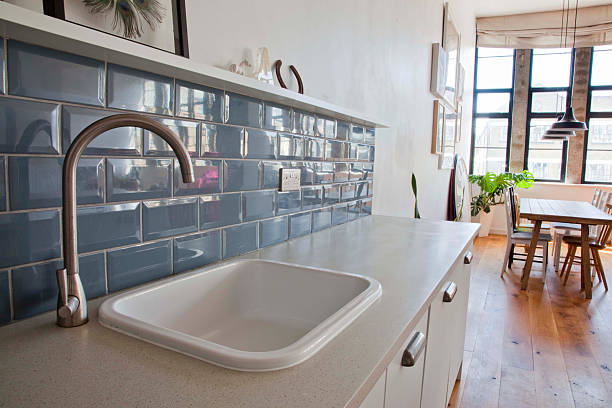The choice of kitchen wall tiles is a crucial aspect of designing a functional and aesthetically pleasing kitchen. Tiles not only serve a practical purpose in protecting walls from splashes and spills but also contribute significantly to the overall design and ambiance of the space. In this comprehensive guide, we will delve into various aspects of kitchen wall tiles, including types, materials, styles, installation, and maintenance.
Types of Kitchen Wall Tiles:
Ceramic Tiles:
One of the most common choices for kitchen walls.
Available in a wide range of colors, patterns, and sizes.
They are durable and easy to clean, making them suitable for busy kitchens.
Affordable compared to some other options.
Porcelain Tiles:
Similar to ceramic tiles but denser and less porous.
Resistant to water, stains, and scratches.
Suitable for both walls and floors.
Ideal for kitchens with high traffic and moisture.
Glass Tiles:
Add a touch of sophistication and modernity to the kitchen.
Reflect light and create a sense of openness.
Available in various colors and finishes.
May require more maintenance to keep them looking pristine.
Natural Stone Tiles:
Options include marble, granite, slate, and travertine.
Bring a unique and organic look to the kitchen.
Durable but may require sealing to prevent stains.
Higher cost compared to ceramic or porcelain tiles.
Mosaic Tiles:
Small tiles arranged in patterns or pictures.
Perfect for creating intricate designs or accent walls.
Available in various materials, including glass, ceramic, and stone.
It can be challenging to clean due to the grout lines.
Choosing the Right Material:
The choice of material depends on various factors, including your budget, aesthetic preferences, and the level of maintenance you are willing to undertake. If you want a cost-effective and low-maintenance option, ceramic or porcelain tiles may be ideal. However, if you are looking for a more luxurious and unique appearance, natural stone or glass tiles could be the perfect fit.
Styles and Designs:
Subway Tiles:
Classic and timeless, subway tiles are rectangular and often laid in a brick pattern.
Suitable for both traditional and contemporary kitchens.
Available in various colors and finishes.
Hexagon Tiles:
Add a geometric and modern touch to the kitchen.
It can be used for a full wall or as an accent.
Available in different sizes and materials.
Patterned Tiles:
Bring personality and visual interest to the kitchen.
Popular patterns include Moroccan, geometric, and floral designs.
Ideal for creating a focal point in the kitchen.
Neutral Tones:
Timeless and versatile, neutral-colored tiles complement various kitchen styles.
White, beige, and gray tones create a clean and airy look.
Perfect for those who prefer a more understated design.
Installation and Maintenance:
Proper installation is crucial for the longevity and functionality of kitchen wall tiles. It’s recommended to hire a professional installer to ensure precise placement and secure adhesion. Additionally, using high-quality grout and sealant is essential to prevent water damage and staining.
Regular maintenance is key to keeping kitchen wall tiles looking their best. Wipe down tiles regularly to prevent the buildup of grease and grime. For porous materials like natural stone, consider applying a sealant to protect against stains.
Conclusion:
Choosing the right kitchen wall tiles involves considering various factors, from material and style to installation and maintenance. With the plethora of options available, you can customize your kitchen to reflect your taste while ensuring a functional and durable space. Whether you opt for classic subway tiles or bold mosaic patterns, the right choice of kitchen wall tiles can elevate the heart of your home.

